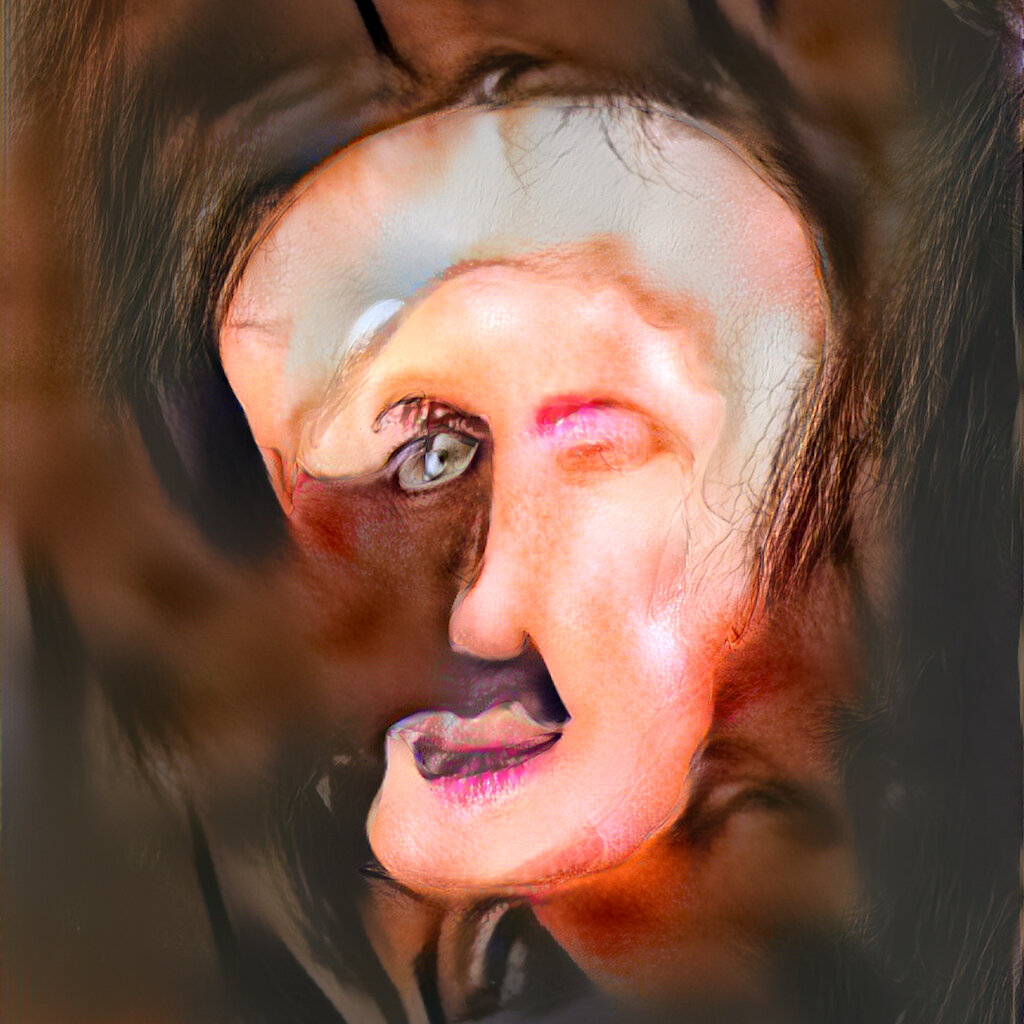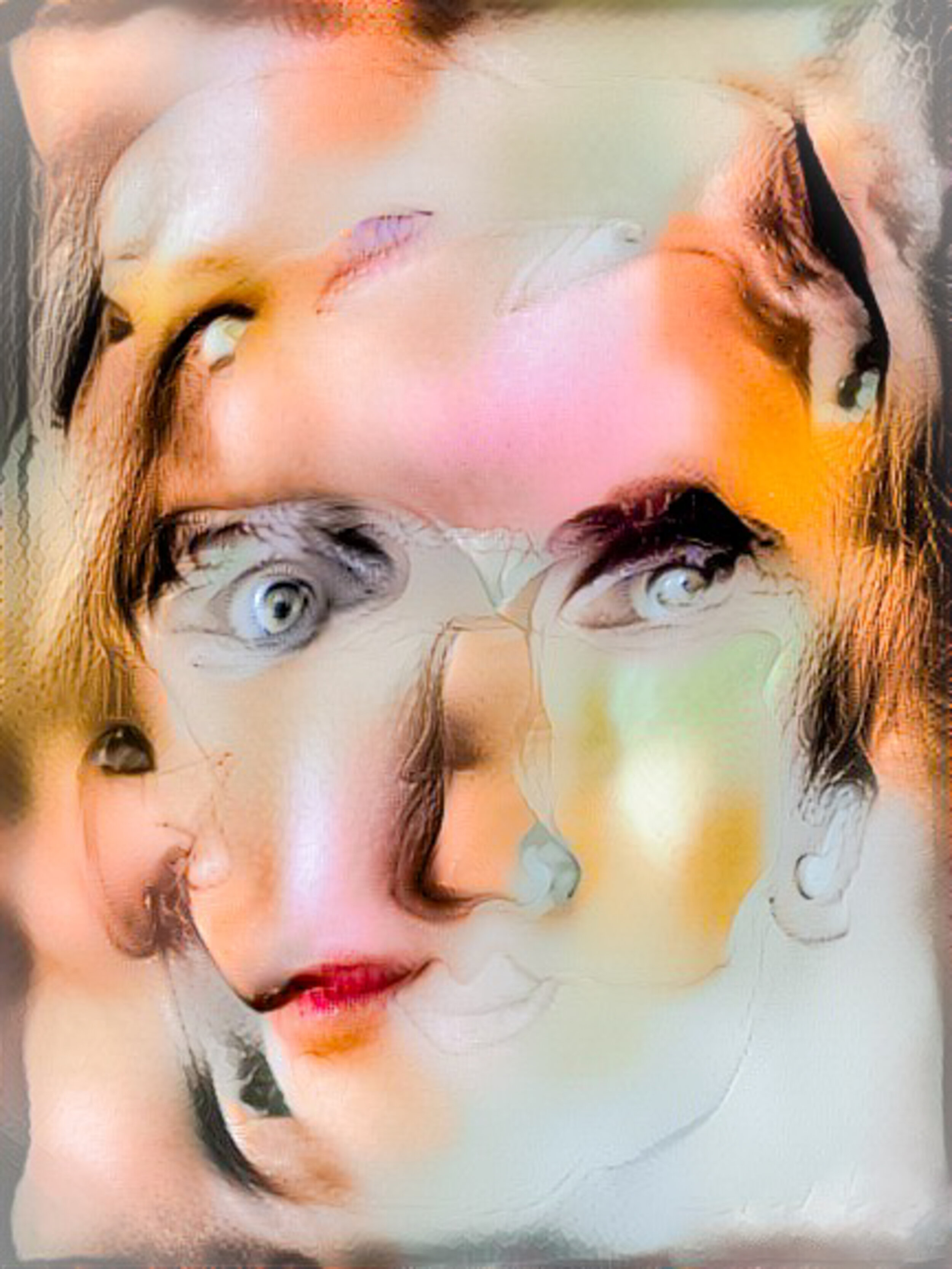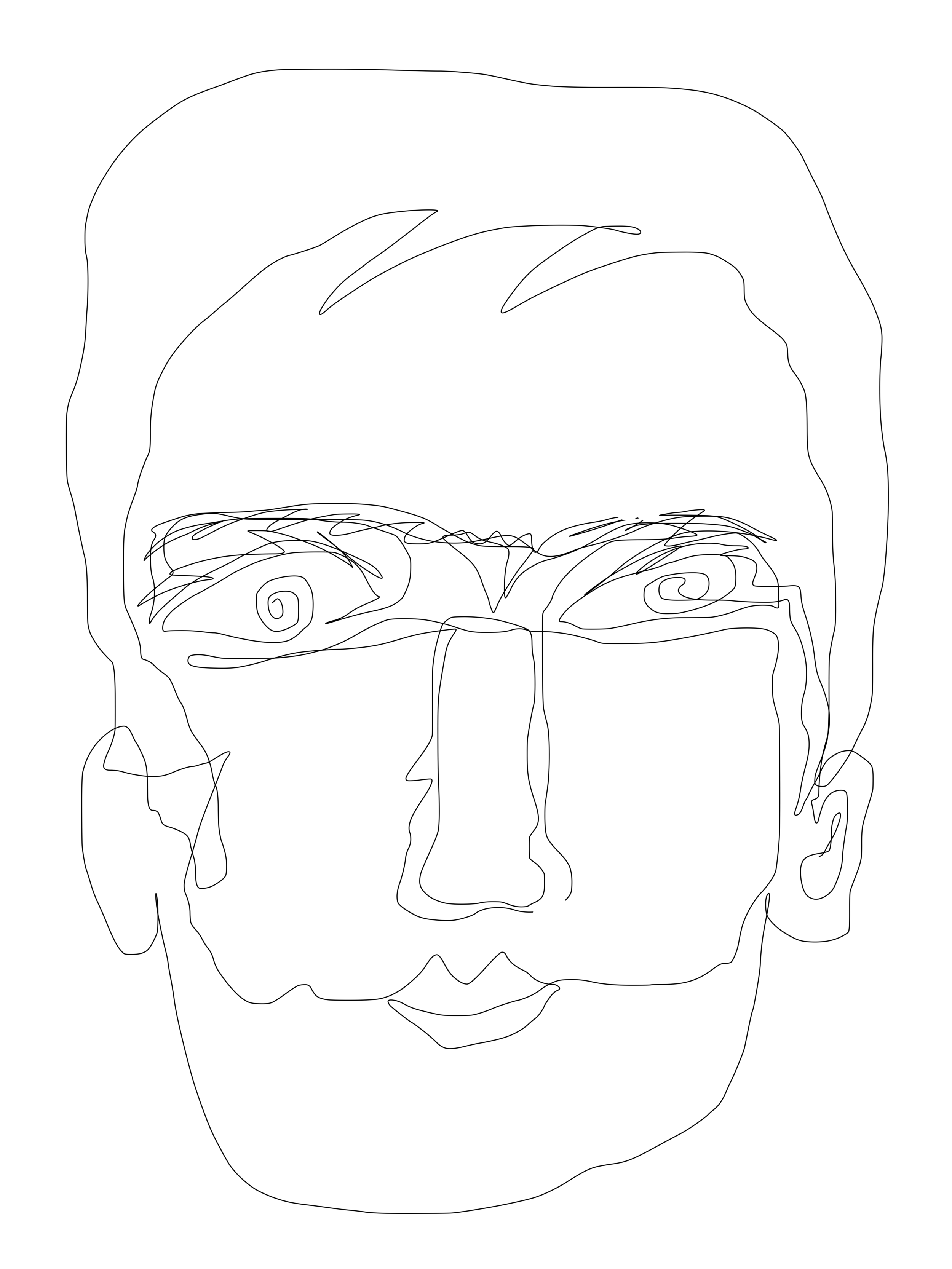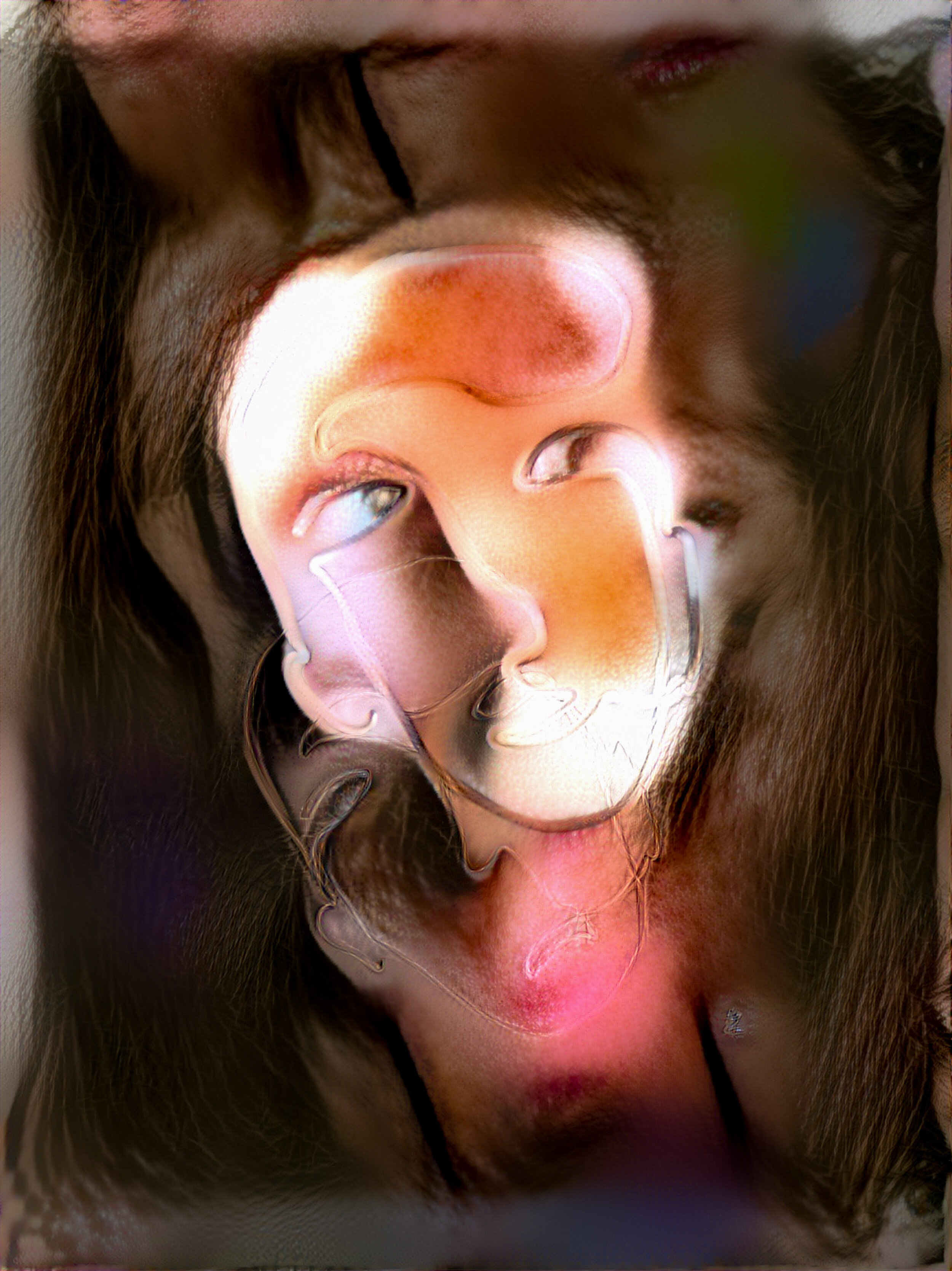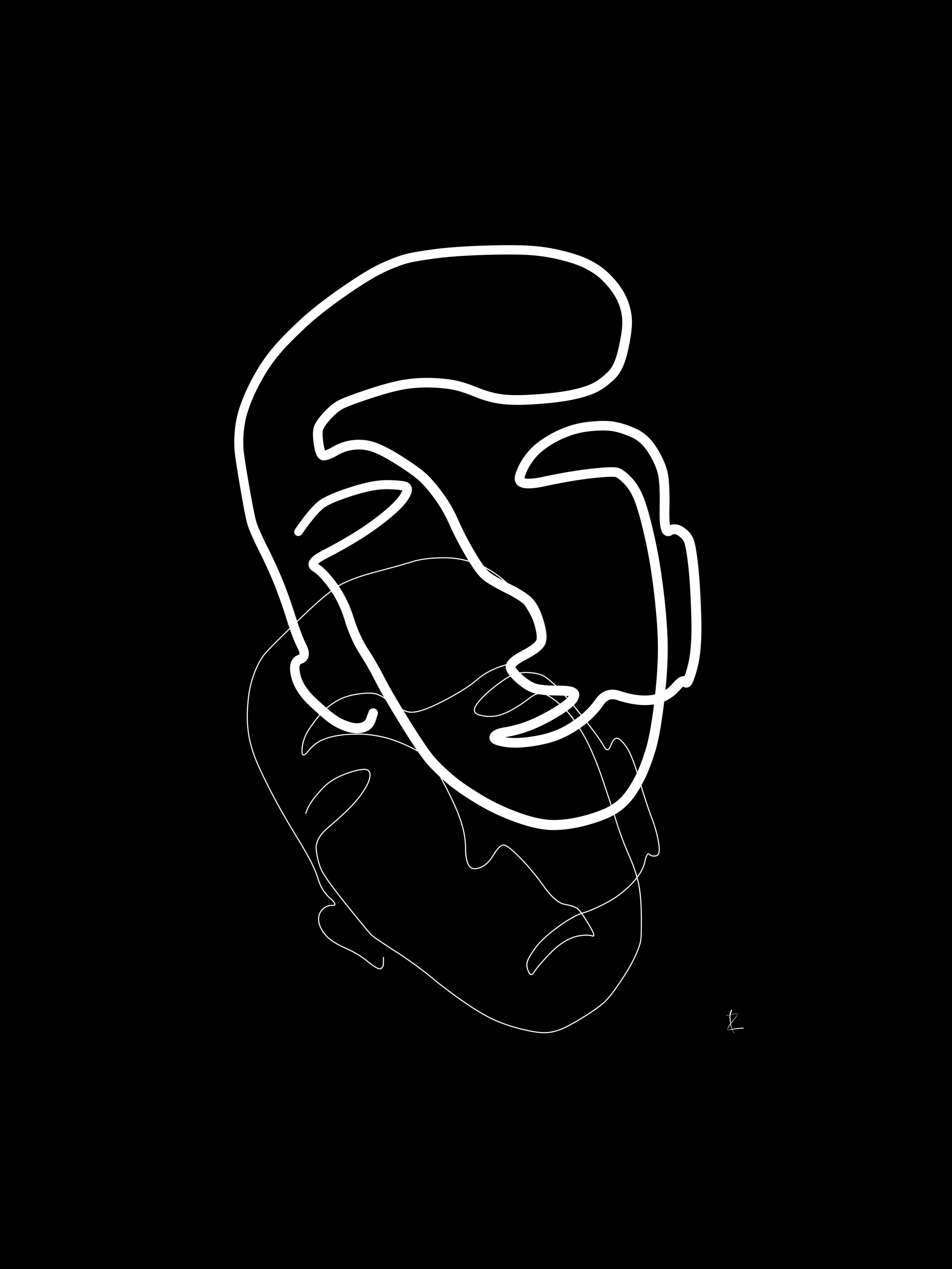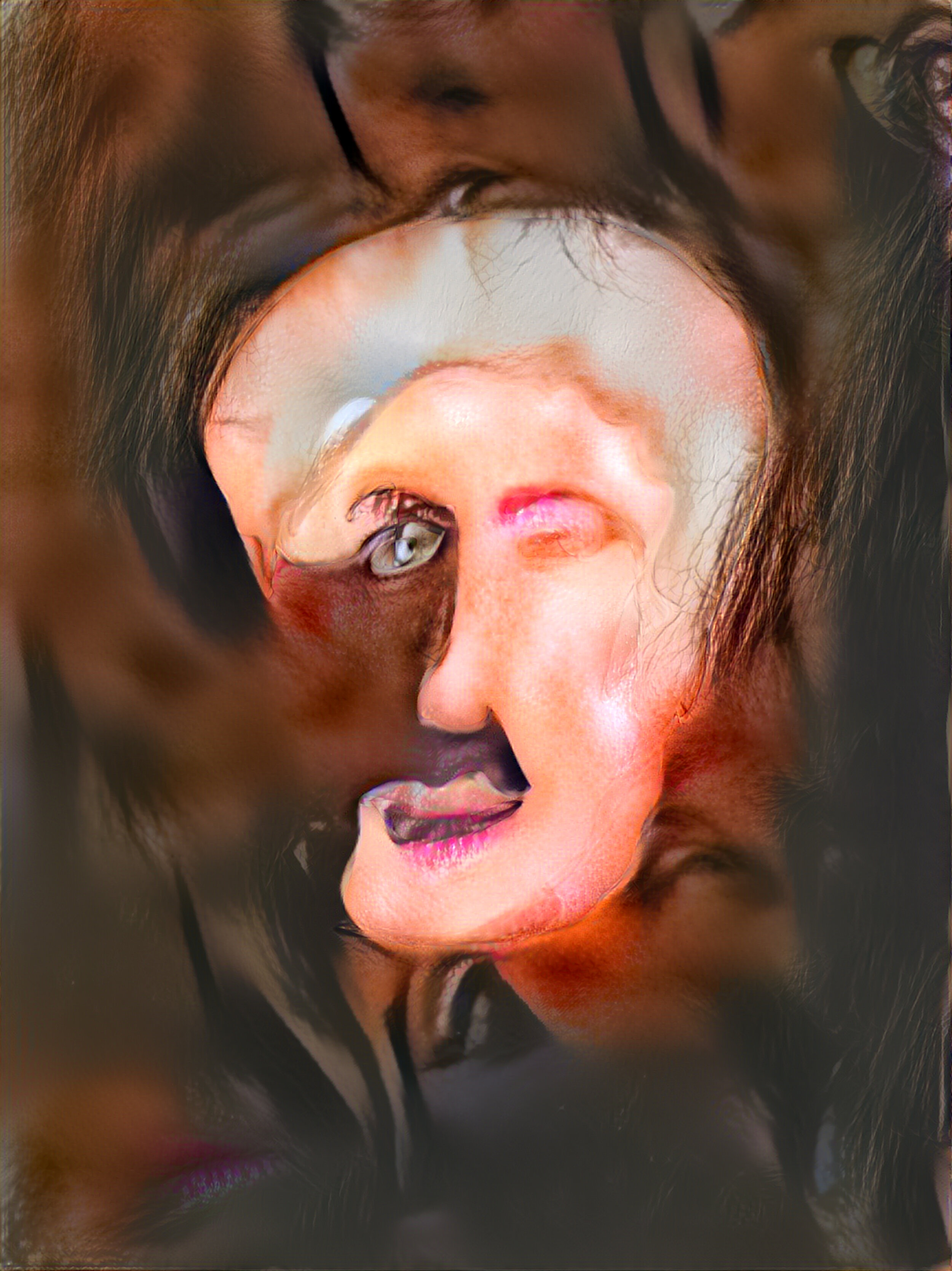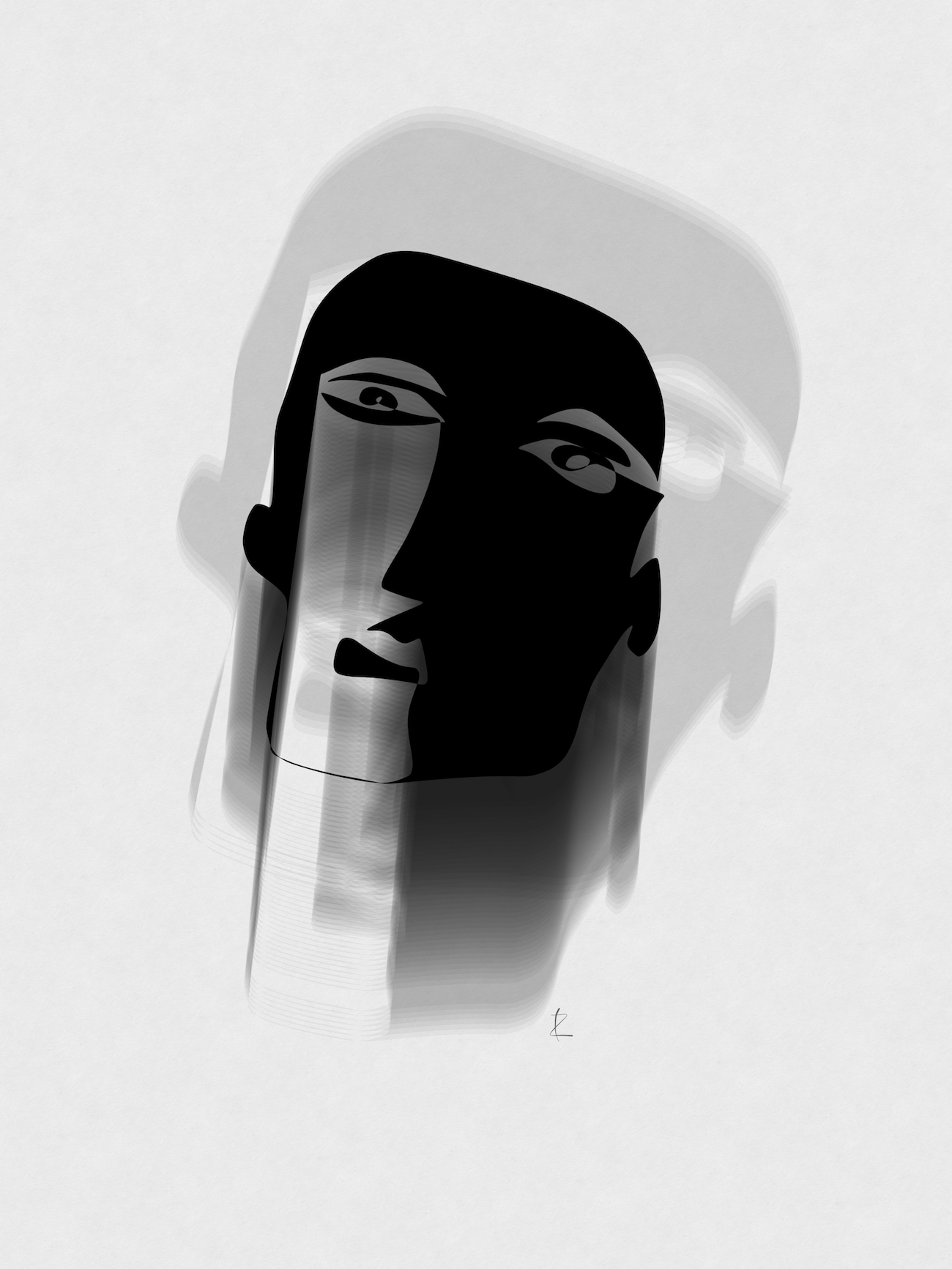Neural style transfer has been widely used to transfer artist painting style to photographs creating new pieces of art. The opposite direction has motivated this project, and the latter investigates the ability to create photorealistic images. Can simple sketches be brought to life? Using only a minimalistic sketch, a photograph of a person and a neural style transfer algorithm, the machine can bring simple illustrations into life transferring the human characteristics, for example, the eyes, ears, mouth. The neural style transfer algorithm used in this work is trained on the pre-trained VGG-19 convolutional neural network and based on Leon A. Gatys' paper, "A Neural Algorithm of Artistic Style". "Orestes. Erinyes. Greek mythology." is the outcome of this algorithm given a digital drawing and a person's photo, which are both artworks of mine.
In Greek mythology, Orestes was the son of Agamemnon, king of Mycenae, who was murdered by his mother's lover when he returned from Troy. Orestes killed his mother Clytemnestra and her lover, causing the wrath of Erinyes, the goddesses of vengeance and retribution. A torturing madness was inflicted upon him for the crime of matricide by exposing him to his internal feelings of guilt and regret, showing how powerful these emotions can be; nothing more tormenting than guilt.




